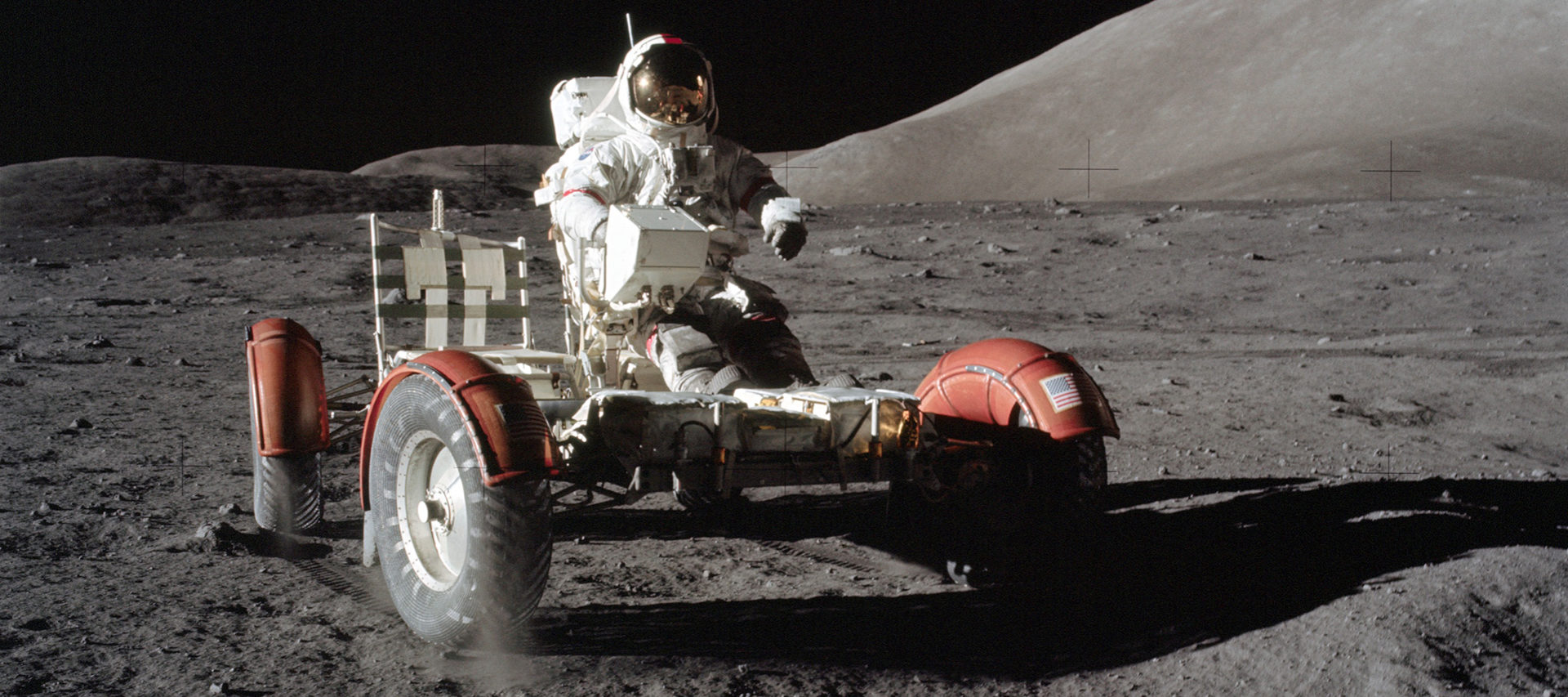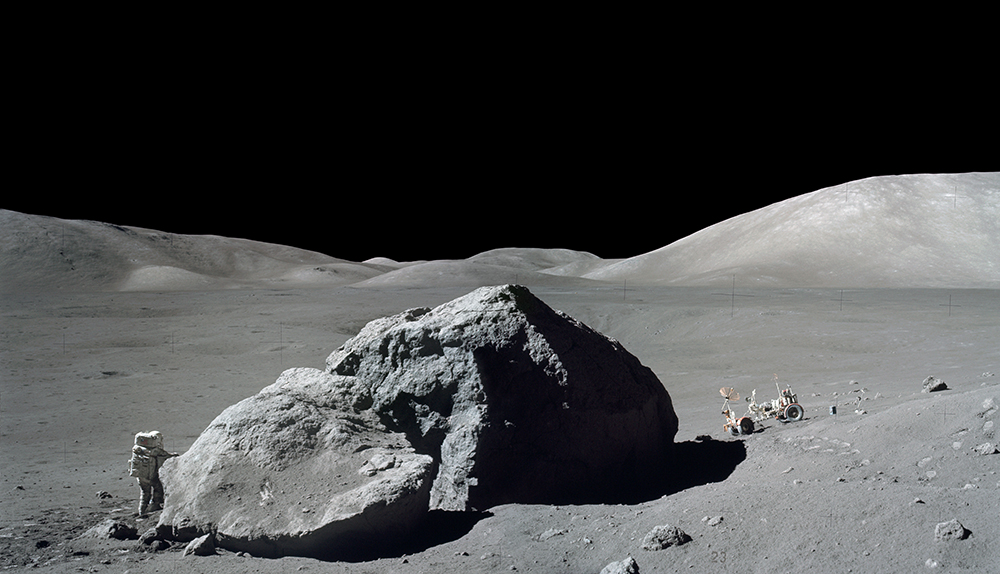

President Bush has called for the human exploration of space. His vision changes the orientation of the American manned spaceflight program from one of observing and gathering data on the human experience in space — the medical effects of zero-g and so forth — to a program of going into space to travel across it, to explore worlds.
The president’s plan is a step in the right direction, because it gives NASA a much-needed goal. The main reason why NASA’s level of achievement in the last three decades has paled in comparison to NASA’s level of achievement from 1961 to 1973 is that, in that earlier period, President Kennedy set a clear goal: Reach the moon within a decade. With that specific mission, NASA did Mercury, Gemini, Apollo, and Skylab. It did a host of robotic missions. It developed virtually all the space technologies that we have today, and all the major American space institutions.
But without a goal, NASA’s level of achievement has declined, even though NASA’s average budget in the 1990s was similar (in inflation-adjusted dollars) to the average NASA budget from 1961 to 1973. The problem has not been a lack of money but an absence of purpose.
So the question arises: What is the right goal for NASA? The right goal is Mars for the following three reasons: Mars is where the science is, Mars is where the challenge is, and Mars is where the future is.
First, the science. A multitude of issues in different scientific disciplines — planetary geology, meteorology, seismology, and other fields — could be answered by putting humans on Mars. But the central questions involve life: Was there, or is there, life on Mars? And if so, what is the nature of that life?
To uncover whether life evolved from chemistry on Mars is the critical experiment for knowing whether the evolution and development of life from chemistry is a general phenomenon in the universe, wherever appropriate physical and chemical conditions exist. Mars appears to have had liquid water for a significant period of time — longer than it took for life to appear in the fossil record on Earth after there was liquid water here. So it’s the Rosetta Stone for letting us know the answer to the question of life.
It’s also the key for discovering whether all life has to have the same form as life on Earth, since all life on Earth is the same at the biochemical level. It all uses the same RNA and DNA methods of replicating information and so forth — but perhaps it does not have to. Going to Mars can help us find out.
On Earth, fossil-hunting involves hiking long distances through unimproved terrain, and climbing up steep hillsides or cliffs. It involves digging and pickax work, as well as delicate handiwork, like carefully splitting open shales edgewise to reveal the fossils that have been trapped between the pages of rocks pasted together. This is far beyond the ability of robotic rovers like Spirit and Opportunity. If you took one of these robots to a paleontological dig on Earth, the researchers might use it as a platform for putting coffee cups on.
It is true that wearing a spacesuit greatly reduces your situational awareness. Obviously you don’t have a sense of smell or a direct sense of touch. But you do retain the ability to pick up samples and manipulate them, and the ability to break rocks open and look inside them. You are able to walk back and forth, looking down at rocks and taking in with your eyes the equivalent of millions of high resolution images.
The human explorer can follow up on all sorts of intuitive clues and observations. Out of the thousands of rocks he has glanced at and the hundreds he has looked at more closely — perhaps he brings ten samples back into the habitat. There he can look at them with a hand-lens; he can thin-section them; he can examine them under a microscope.

Two hundred years after Lewis and Clark, there is not a robot on this planet that you can send to the grocery store to pick up a bag of unbruised apples. If they can’t do a trip to the grocery store, how can they explore a planet? How can robots match the intuition, versatility, ingenuity, and common sense of the human explorer?
Now, I’m not putting down robots. It is excellent and important to do robotic missions. But a robot explorer on the surface of a distant planet simply cannot duplicate what a human explorer could do. To find out whether there is life on Mars, we’re going to have to set up drilling rigs, drill down into the ground, sample the water, bring it into the lab, and examine the samples under a battery of tests, with a scientist who can react flexibly to the data, in consultation with other scientists back on Earth.
Remember, we’ve sent robots to Mars to search for life before. In 1976, we sent Viking and did four tests on the Martian soil to determine if there was life. Three suggested there might be life; the other was negative. The meaning of these experiments is still being debated. Viking asked Mars, “Do you have life?” Mars said, “Maybe. Please rephrase the question.” If there were humans there, they could immediately have rephrased the question by performing additional experiments. This is the superiority of human exploration.
The second reason to go to Mars is the challenge. It is the chance to do something heroic, to advance humanity on the frontier. A humans-to-Mars program would be a challenge to our entire society. In particular, it would be an inspiration to the next generation: “Learn your science and you can pioneer a new world. Develop your mind and you can be a hero for humanity — doing something that has never been done before, seeing things that no one has seen before, building where no one has built before.”
This is the challenge that the youth of my generation got from the Apollo program. As a result of that challenge, I became an engineer. As a result of that challenge, the number of scientists and engineering graduates in this country doubled at every level: high school, college, Ph.D.
And what did those people end up doing? Some went into aerospace, but most of them went off into other scientific ventures: they engaged in medical research, they built Silicon Valley, they created the economic boom of the 1990s. Those 40-year-old techno-nerd billionaires of the 1990s were the 12-year-old boy scientists of the 1960s. It’s an investment: If we go to Mars, we’ll someday get the payoff that comes from challenging people in a serious way, and by being a society that values great scientific and human achievements.
The final reason to go to Mars is the issue of the future. Imagine you lived 50,000 years ago in Kenya, along with the rest of the human race, and received a proposal from someone who thought humans should colonize Europe or Asia. The skeptics would have said: “Those places are impossible to live in. It’s much too cold.” If they had robotic probes, they might have sent them to confirm these assumptions with more precision: “Our robotic probes show you could not survive a single winter night in Europe.”
But people were able to colonize Europe with the aid of technology: clothing, houses, fire. It is on the basis of our technological ingenuity that humans have left our natural habitat, the Kenyan Rift Valley, and transformed ourselves into a global species with hundreds of nations, languages, and cultural traditions. There has been a vastly richer human experience as a result of the human willingness to leave the known in order to explore and master the unknown. And this is the challenge that Mars holds for us today.
Mars is not just an object of scientific inquiry. It is a world. It is a planet with a surface area equal to all the continents of the Earth put together, with all the resources needed to support not only life but technological civilization, should we choose to exercise our creativity sufficiently to make that possible.
If we do what we can in our day, which is establish that first human foothold on Mars, then five hundred years from now there will be a new branch of human civilization living there. Perhaps many new branches of human civilization will flourish on Mars, with their own cultures, their own languages yet unspoken, their own novel ideas on human social organization, their own traditions of heroic deeds, and their own manifest contributions to technology and invention.
And that is something wonderful. That is something enormously valuable. I wonder if we can even put a price tag on helping to give birth to a new branch of human civilization, one that contributes in unimaginable ways to human progress and the human story.
And not only that, but a branch of civilization whose development shows us that we have the capability to do such things, the capability to engage in yet greater ventures, more daring ventures, further out, toward an unlimited future. And that is the reason why humans should go into space.
Exhausted by science and tech debates that go nowhere?